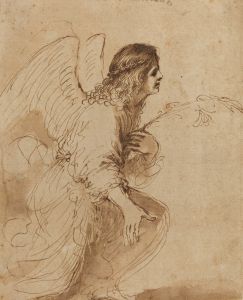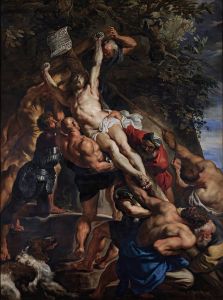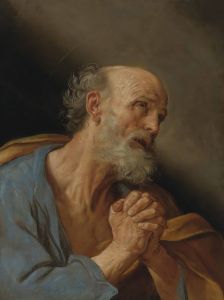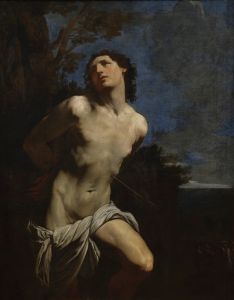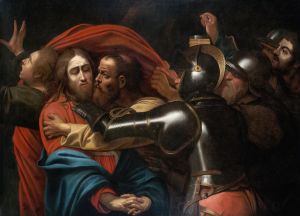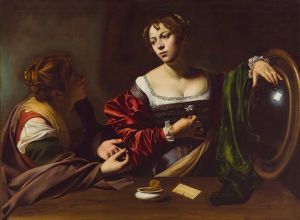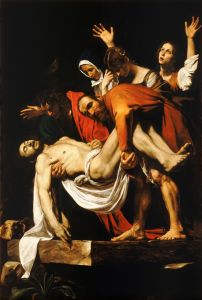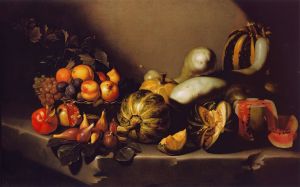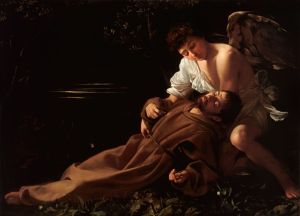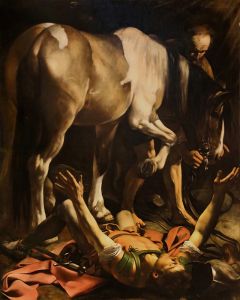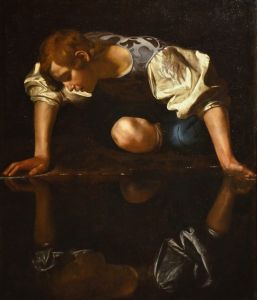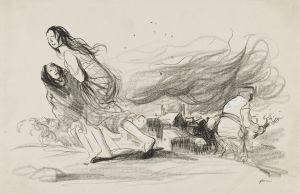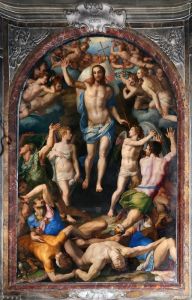
The Crowning with Thorns
A hand-painted replica of Caravaggio’s masterpiece The Crowning with Thorns, meticulously crafted by professional artists to capture the true essence of the original. Each piece is created with museum-quality canvas and rare mineral pigments, carefully painted by experienced artists with delicate brushstrokes and rich, layered colors to perfectly recreate the texture of the original artwork. Unlike machine-printed reproductions, this hand-painted version brings the painting to life, infused with the artist’s emotions and skill in every stroke. Whether for personal collection or home decoration, it instantly elevates the artistic atmosphere of any space.
"The Crowning with Thorns" is a painting by the Italian Baroque master Caravaggio, created around 1602-1604. This artwork is one of several interpretations by Caravaggio of the biblical theme of Christ's suffering, specifically focusing on the moment when Jesus is mocked and crowned with thorns by Roman soldiers. The painting is currently housed in the Kunsthistorisches Museum in Vienna, Austria.
Caravaggio, known for his dramatic use of chiaroscuro, employs this technique to great effect in "The Crowning with Thorns." The stark contrast between light and dark not only highlights the physical torment of Christ but also underscores the emotional intensity of the scene. The light falls dramatically on Christ's face and upper body, drawing the viewer's attention to his expression of suffering and resignation. The surrounding figures are cast in shadow, emphasizing their roles as tormentors and creating a sense of moral ambiguity.
The composition of the painting is tightly focused, with the figures occupying much of the canvas, creating an intimate and immediate connection with the viewer. Christ is depicted seated, his hands bound, while two soldiers force the crown of thorns onto his head. The soldiers are portrayed with a sense of brutishness, their faces partially obscured, which serves to dehumanize them and focus the viewer's empathy on Christ. A third figure, often interpreted as Pontius Pilate or a Roman official, looks on, adding to the narrative tension.
Caravaggio's approach to religious subjects was revolutionary for his time. He eschewed the idealized forms and serene expressions typical of earlier Renaissance art, opting instead for a raw, realistic portrayal of human emotion and physicality. This painting is no exception, as it captures the brutality and humiliation of the event with unflinching honesty. The use of everyday models and contemporary clothing in his works further grounded these biblical scenes in reality, making them more relatable to the viewer.
"The Crowning with Thorns" reflects Caravaggio's broader artistic themes, including the exploration of human suffering, the interplay of light and shadow, and the tension between the sacred and the profane. His work had a profound influence on the Baroque movement and subsequent generations of artists, who were inspired by his dramatic realism and emotional depth.
The painting's provenance is well-documented, having been part of the collection of the Gonzaga family in Mantua before being acquired by the Habsburgs and eventually finding its home in Vienna. Its historical journey reflects the broader movement of art across Europe and the shifting tastes and influences of different periods.
In summary, "The Crowning with Thorns" by Caravaggio is a powerful representation of a pivotal moment in the Passion of Christ, rendered with the artist's characteristic intensity and realism. It stands as a testament to Caravaggio's mastery of light and shadow, his innovative approach to religious themes, and his enduring impact on the art world.





